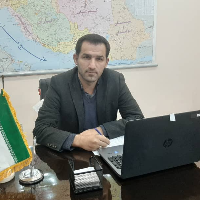Explaining the motivations of international migrants remittances with grounded theory a case study: Lamerd township
Author(s):
Abstract:
Introduction
Remittances have been broadly termed by the International Organization of Migration (IOM) as monetary transfers that a migrant makes to the country of origin. These are usually private transfers of money from migrants back to their home region in the country of origin; and also remittances may be considered as funds that are invested, deposited or donated by the migrants to their home country. In recent years, according to international reports, many developing countries have experienced significant growth in remittance monetary. Furthermore, a large amount of the total remitted are transferred through informal channels that are not reported in international statistics. Many research results, such as Lucas and Stark (1985), Agarwal and Horowitz (2002), de la Briere and colleagues (2002(, Amuedo and Pozo (2004), Smith Kelly and Solomon (2009), de Brauwand and colleagues (2013), indicate that migrants have different motivations in transfering money to their origin communities. Such different motivation factors have diverse impacts on home regions. The field observations and research findings of Motie Langeroudi and colleagues (2014) in rural area of Lamerd Township show that remittance have an effective role in dimensions of local development process. The aim of present research concentrates on understanding the different migrant motivations in remittances to Lamerd rural areas. Methodology
Research methodology is qualitative, based on grounded theory framework. Based on theoretical and purposeful sampling 26 Semi-structured interviews with migrants were used in the process of data collection. The semi-structured interviews have continued until theoretical saturation phase. In the next stage audio-taped files converted to textual documents, and were used for analytical stage in data processing. The analyzing of the data was carried out in three phase, including: open coding, axial coding, and selective coding. The analysis units of three stages coding, consists concepts, categories and propositions. Finally, we identified core categories and then emerged the central theoretical phenomenon. Results
The results of the three-phase of data coding, have revealed seven core categories. After exploring various aspects including causal conditions, phenomenon, context, Intervening conditions, strategies and implications of each core categories, the "remittance motive" have emerged as central theoretical phenomenon. The causal conditions of central theoretical phenomenon has its roots in diverse element such as sense of place, religious beliefs, philanthropic attitude, cultural aspirations, economic interests, individual benefits, and social prestige. The intervening conditions of central theoretical phenomenon included governmental and non-governmental organizations, agents and trustees of migrants (remittance transmitters), migrants’ education level and their thoughts and ideologies, continuation of financial flows. Strategies include the construction of health centers, educational and religious places, and financial support from the poor and patient people. The most important outcomes of central theoretical phenomenon include great number health centers, and educational and religious constructions and facilities in some of the settlements, in some cases ethnic and social separatism, low levels of investment in the manufacturing and economic sectors. Conclusion
Different types of moneys sent or invested by migrants are considered as one of developmental strategies for remittance-recipient communities. Lamerd township in southern Iran is recognized as areas where remittance investments by overseas migrants have significant importance in local development. The findings of this study, by use of a grounded theory methodology, indicate that remittance senders have diverse motives to send money or investment in the area. The understanding of such motivations factors can enhance the effectiveness of investments induced by migrant’s remittances in the studied area. In order to properly be able to respond the actual needs and priorities of local communities. Therefore, it is necessary to through careful identification and analysis of different motivations in sending money or investment to origins settlements it may be possible to guide the received funds into the right direction.Language:
Persian
Published:
Journal of Rural Research, Volume:6 Issue: 3, 2015
Pages:
613 to 634
magiran.com/p1495111
دانلود و مطالعه متن این مقاله با یکی از روشهای زیر امکان پذیر است:
اشتراک شخصی
با عضویت و پرداخت آنلاین حق اشتراک یکساله به مبلغ 1,390,000ريال میتوانید 70 عنوان مطلب دانلود کنید!
اشتراک سازمانی
به کتابخانه دانشگاه یا محل کار خود پیشنهاد کنید تا اشتراک سازمانی این پایگاه را برای دسترسی نامحدود همه کاربران به متن مطالب تهیه نمایند!
توجه!
- حق عضویت دریافتی صرف حمایت از نشریات عضو و نگهداری، تکمیل و توسعه مگیران میشود.
- پرداخت حق اشتراک و دانلود مقالات اجازه بازنشر آن در سایر رسانههای چاپی و دیجیتال را به کاربر نمیدهد.
In order to view content subscription is required
Personal subscription
Subscribe magiran.com for 70 € euros via PayPal and download 70 articles during a year.
Organization subscription
Please contact us to subscribe your university or library for unlimited access!



